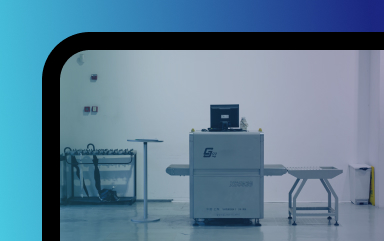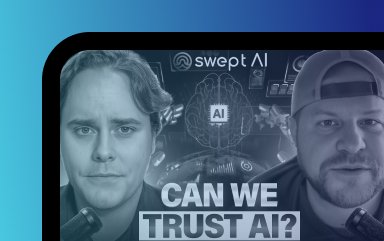
Software is shifting from deterministic “recipe-following” code to agentic, goal-driven systems that can adapt to changing inputs, contexts, and user intent. Using a line-cooks-vs-chefs metaphor, you argue that agents should be given goals, constraints, and tools—then trusted to plan and iterate—illustrated by your Swept AI Airtable enrichment workflow and by agentic red teaming. The larger takeaway: teams that embrace goal-based programming and AI-first/API-first interfaces will build more resilient, scalable systems than those clinging to brittle procedural scripts.

Clean-input testing creates a false sense of reliability in AI systems. By mapping normal behavior, gradually increasing noise, finding collapse thresholds, and supervising based on deviations, teams can build AI that holds up under real-world messiness.

Stacking LLMs to supervise other LLMs looks like “defense in depth,” but it actually multiplies probabilistic failure points. If a judge model is consistently better than the base model, that’s a sign the architecture is backwards. Real AI supervision for safety-sensitive use cases requires deterministic policies enforced in code, paired with distribution-aware evaluation that detects drift and deviations. Guardrails can help understand behavior, but hard boundaries protect systems when behavior goes wrong.

Google’s release of Gemini 3 marks a real turning point in how we think about agentic systems, autonomous workflows and the role of human supervision. Over the last year we have seen steady progress across the major model labs, but most of those advances still required a heavy human touch. Developers were effectively babysitting agents, guiding them step by step, correcting them as they went, and patching the same blind spots over and over.

In this episode of The Innovators & Investors Podcast, host Kristian Marquez sits down with Shane Emmons, founder and CEO of Swept, to explore the complexities and challenges surrounding AI trust and reliability

Companies aren’t abandoning AI because models fail — they abandon them because nobody can explain decisions. Learn why trust, explainability, and an “evidence layer” matter more than accuracy scores, and how to build AI systems that operators actually adopt.

AI detection systems aren’t consistent — and schools are discovering the cost. When prediction becomes action without verification, students get harmed. Here’s how to fix the AI verification gap before the next false alarm.

AI adoption is accelerating, but measurable ROI still lags. Learn how the gap between deployment metrics and behavioral supervision causes 80% of AI systems to fail at impact — and why tracking refusal patterns reveals true AI performance.

Alex Mysinek sits down with Shane Emmons, Founder and CEO of Swept AI, to talk about the missing piece in the AI revolution—trust. We are creating a system that supervises, evaluates, and protects AI models to ensure safety, accuracy, and alignment.

AI systems like GRACE 3.0 prove that real validation goes beyond accuracy scores. Learn why behavioral consistency, edge case testing, and drift detection matter more than single-run accuracy when deploying AI in healthcare and enterprise systems.

GPT-5 dropped temperature control, eroding repeatability and auditability. Swept AI explains why determinism matters and how to certify agentic workflows.

AI won’t replace lawyers, but careless use can jeopardize careers. Treat AI as an assistant to speed research, review, and drafting—while enforcing oversight to catch drift, verify outputs, and protect client data. Maintain monitoring, training, and strict privacy controls. Tools like Swept.AI help detect drift early so you stay compliant and in control.

The AI ecosystem is riddled with gaps between promise and proof. At Swept AI, we're building the missing infrastructure layer for AI reliability—testing agents like attackers would and monitoring them in production so teams can move fast and stay in control.

AI deployment in enterprises is no longer hindered by capability or integration challenges but by a systemic trust gap. Organizations can’t reliably build processes around systems that produce inconsistent or hallucinated outputs. Swept’s Trust Framework addresses this through nine pillars—Security, Reliability, Integrity, Privacy, Explainability, Ethical Use, Model Provenance, Vendor Risk, and Incident Response—with reliability and security as the most common failure points. The solution lies in context engineering: a structured, auditable way to control variance and ensure AI outputs remain within defined, acceptable bounds. The future of enterprise AI isn’t more power—it’s trustworthy performance.

In the dynamic world of AI, ensuring system reliability and accuracy is challenging due to two critical issues: AI hallucinations and AI drift. While hallucinations are dramatic and often headline-grabbing, AI drift is a more insidious, long-term threat.

Organizations rushing AI to market without proper validation face millions in avoidable losses. This analysis examines real cases like IBM's $4 billion Watson Health writedown and reveals why 42% of AI projects now fail before production. Learn the difference between structured and unstructured AI deployment, discover proven validation frameworks that prevent costly failures, and understand how thorough testing actually accelerates successful implementation rather than delaying it.

At Swept, we don’t see LLMs as chatbots. We see them as something bigger: a universal engine for function discovery. Need a parser, a scoring system, or a triage rule? The model already contains it—you just have to find it.

AI can supercharge your business—but hidden biases in your data can quietly undermine it. Discover how to spot and fix these blind spots before they lead to unfair outcomes, legal trouble, or lost trust.

Swept AI, a startup focused on supervising, interrogating, and optimizing autonomous AI agents, has raised $1.4M in pre-seed funding led by M25, with participation from Wellington Management Company, BuffGold Ventures, SPARK Capital, Service Provider Capital, The Unicorn Group, and angel investors.

This article explores how AI is transforming the accounting profession. It positions AI as a powerful assistant rather than a replacement—helping automate repetitive tasks and freeing accountants to focus on higher-value strategic work. However, the post emphasizes that blind reliance on AI can be dangerous: without oversight, data drifts, compliance breaches, or misconfigurations could expose firms to serious risks. The key takeaway is that accountants must remain vigilant, continuously update their knowledge, and actively monitor AI systems. Those who embrace AI responsibly will thrive, while neglect may put their careers at risk.

AI is becoming an essential tool for accountants, helping automate repetitive tasks like data entry and anomaly detection so professionals can focus on strategy and client advisory. However, blind reliance on AI without oversight can cause serious issues. Risks include data drift leading to inaccuracies, security breaches involving sensitive financial data, and compliance failures with privacy regulations. Accountants must remain vigilant by monitoring outputs, configuring tools properly, and staying trained on AI’s strengths and limitations. With proactive oversight and tools like Swept.AI, accountants can maximize efficiency and maintain trust without being replaced.

In the gold rush of AI, it's easy to get caught up in the hype. The siren song of "train your own model!" echoes through boardrooms and tech conferences. But before you dive headfirst into the deep end of AI development, ask yourself a crucial question: Do you really need to train your own AI model?

Despite its elegant design, the AI Pin faced significant challenges in replacing smartphones. Convincing a skeptical public and investors of its viability proved difficult, as integrating advanced technology into everyday use is fraught with hurdles, particularly in ensuring user adoption and trust.

OpenAI just bought Jony Ive’s secretive AI hardware startup, io, for $6.5 billion. No product. No launch. Just a prototype and a promise.

There’s a growing tendency in AI marketing circles to refer to MCP—the Model Context Protocol—as the “USB of AI.” The idea, presumably, is that it offers some kind of plug-and-play universal interface between language models and tools. But this metaphor is worse than lazy—it’s actively misleading.Let’s dig into why this comparison doesn’t work, and why we should be framing MCP for what it really is: the HTTP of agentic AI.

Product management is constantly under pressure to innovate. Customer requests are relentless. AI stands as a potential powerful ally. By leveraging AI, you can streamline product development, enhance user experiences, and drive data-driven decisions. However, blindly trusting AI without proper oversight can lead to significant issues, including severe drifts and potential breaches of sensitive information.

This article explores the practical aspects of AI implementation, emphasizing the importance of observability, testing, and realistic expectations. It offers valuable insights for developers seeking to leverage AI effectively in solving real-world problems.

The Rabbit R1 security breach serves as a cautionary tale for the AI industry. It highlights the urgent need for comprehensive validation mechanisms to ensure that AI companies maintain high standards of security and quality.

AI has reached peak hype. Every investment has the chance to make—or possibly break—your fund. With numerous startups boasting groundbreaking AI solutions, it’s easy to get swept up in the hype. However, not all AI is created equal. Blindly trusting AI without thorough due diligence can lead to significant risks, including poor investment choices and potential breaches of sensitive information.

If OpenAI is lurking in the shadows and Rabbit stumbled publicly, Google is going full-throttle—unleashing a torrent of AI models everywhere at once.

Your AI wowed in the demo—but can it deliver in production? Learn how model drift, hidden biases, and lack of observability fuel the AI Consistency Crisis—and how to solve it with Swept.AI.

Software development requires innovation and speed. AI copilots have merged as vital instruments. Utilizing its capabilities, repetitive coding tasks can be delegated, allowing developers to dedicate their time to addressing intricate problems and fostering innovation. However, relying solely on AI without diligent supervision may result in substantial complications, including significant deviations and potential breaches of sensitive information.

AI is quickly becoming an essential design tool. By embracing AI, you can automate repetitive tasks, enhance your creative process, and streamline your workflow. However, blindly trusting AI without proper oversight can lead to significant issues, including design inconsistencies and potential breaches of sensitive information.

It seems as though time is always of the essence for accountants, and AI stands as a powerful ally to manage this pressure. By embracing it, you can handle tedious tasks more efficiently, freeing you up to focus on complex, strategic work. However, blind trust in AI without proper oversight can lead to significant issues, including severe drifts and potential breaches of sensitive information.

AI systems are vulnerable to security risks like prompt injection and data poisoning. Learn how AI red teaming can help protect your business from threats before they cause damage.

The biggest takeaway from this event isn’t that an AI system can be compromised. We already knew that. It’s that many teams are still pushing updates without a clear, enforceable model for trust validation before release.

Unit tests aren’t enough for AI. Discover how variant and invariant testing can reveal blind spots in your models and help you build smarter, more reliable AI systems.

As a founder, you're constantly juggling multiple responsibilities, from securing funding to scaling operations. In this demanding environment, AI stands as a powerful ally. By embracing it, you can streamline operations, enhance decision-making, and focus on strategic growth. However, blind trust in AI without proper oversight can lead to significant issues, including severe drifts and potential breaches of sensitive information.